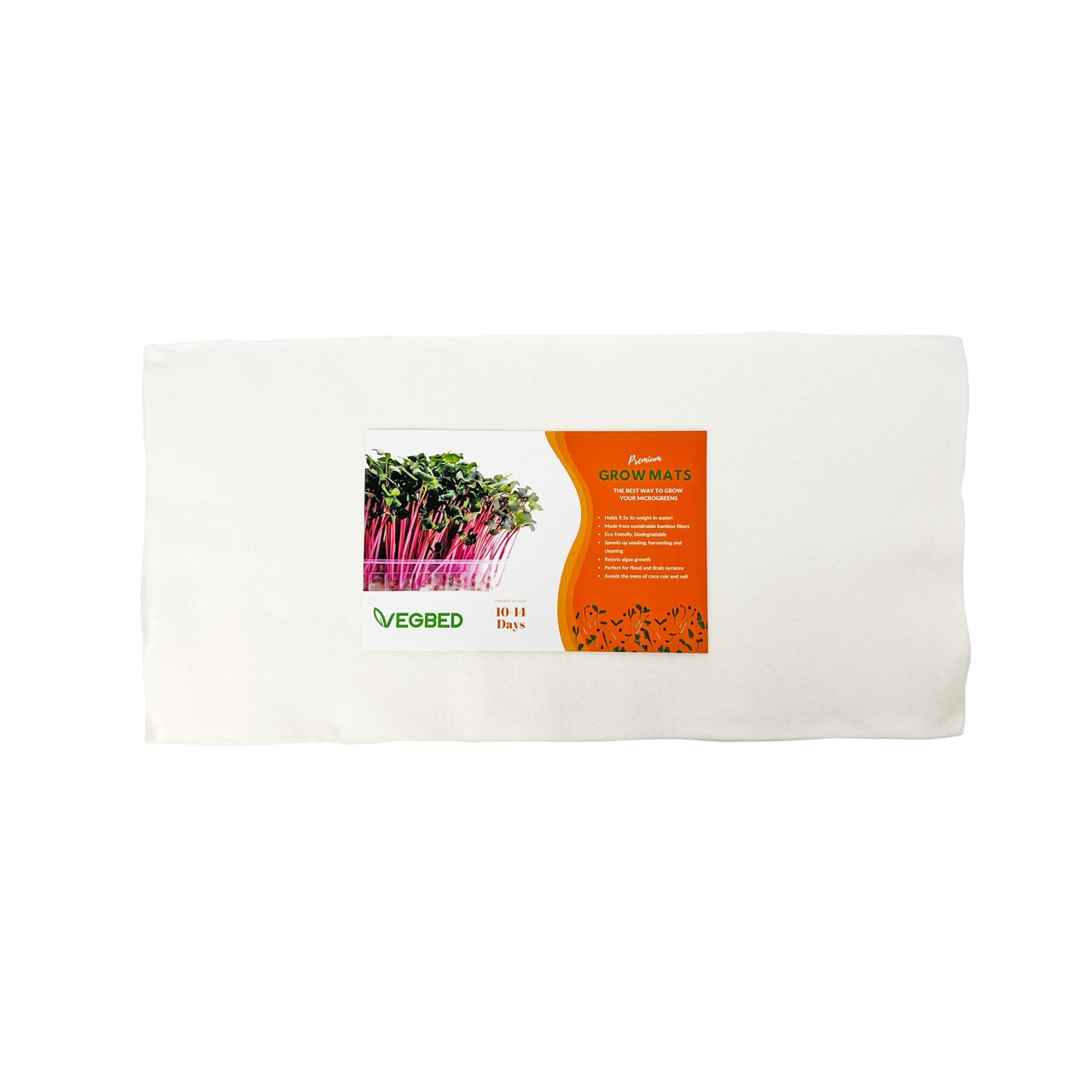Growing nutrient-packed microgreens indoors is an accessible journey for indoor farmers looking to add multiple flavor options for their customers in limited growing space.
What are microgreens?
Let's start by understanding what microgreens are before diving into how to grow them.
Microgreens are vibrant, tiny greens that pack a punch in both flavor and nutrients. They are also an excellent way to have a high margin, quick turnover crop that should be part of your indoor farming operations.
This beginner's guide will navigate you through the steps to successfully cultivate these tiny greens indoors.
The Essentials
Starting your microgreen journey requires just these 5 essentials!
- Containers or Trays: Shallow containers or trays equipped with drainage holes to prevent waterlogging.
- Growing Medium/Substrate: Choose your preferred medium, we like using our bamboo mats for sustainability and ease of use.
- Microgreen Seeds: Make sure you use high-quality seeds specifically labeled for microgreen cultivation.
- Spray bottle.
- Clean water (preferably filtered/reverse osmosis)
Choosing your Seed
Here are some common microgreens varieties and growing tips for each:
- Pea Shoots: These have a sweet taste and are relatively easy to grow. Use well-soaked seeds and ensure good drainage.
-
Radishes: Quick to germinate and offer a spicy flavor. They require moderate light and consistent moisture.
-
Sunflowers: Nutty and crunchy, sunflowers are popular microgreens. Soak seeds before planting and provide adequate air circulation.
-
Kale: Hardy and packed with nutrients, kale microgreens thrive in cooler temperatures. Regular misting helps keep them moist.
-
Broccoli: Rich in antioxidants, broccoli microgreens benefit from weight on top during germination for better root contact with the medium.
-
Arugula: Peppery and flavorful, arugula microgreens need consistent moisture and moderate light for optimal growth.

Most microgreen varieties work well with Vegbed grow mats. Some are difficult to grow in general (argula, beet, basil) regardless if you're using soil or a grow mat.
For example beets actually have a longer germination time (up to 6 days) using soil than with our grow mats (2-3 days).
Planting Procedures
-
Grab your seed starting tray or plastic container with a lid.
-
Cut and place your grow mat inside the tray or put an inch and a half or two of soil in your container.
-
Use a spray bottle to saturate the mat.
-
Sprinkle your microgreen seeds on top of the mat.
-
Spray the seeds and the growing medium again. Make sure the seeds are saturated.
-
Cover the seeds and place them in the dark for 2-3 days.
-
After 2-3 days of darkness, uncover the seeds and place them in a sunny-facing window, or position a grow light 10-12 inches above them.
-
Pour enough water into the bottom tray to keep the substrate moist.
-
Check daily and replenish water as needed.
-
After about 10-14 days, harvest the microgreens with a clean pair of scissors.

Here’s a sample video on how easy you can start your microgreen journey!
How to start with microgreens with Vegbed in 60 seconds!
Common Issue When Starting with Microgreens
When starting to grow microgreens, a few common problems might arise:
-
Overwatering or Underwatering: Finding the right balance is crucial. Overwatering can cause mold or rot while underwatering can hinder growth.
-
Insufficient Light: Inadequate light can lead to leggy or elongated stems, affecting the quality of the greens.
-
Poor Seed Quality: Low-quality seeds or seeds not meant for microgreens might result in uneven growth or failure to germinate.
-
Improper Ventilation: Lack of airflow can promote mold growth. Proper ventilation helps maintain healthy growing conditions.
-
Contamination: Using unclean containers or water can introduce contaminants that affect the growth of microgreens.
-
Pests and Diseases: Fungal infections, pests like aphids or gnats, and diseases can impact the health of microgreens.
-
Incorrect Harvesting: Harvesting too early or too late can affect the taste, texture, and quality of the microgreens.
Regular monitoring, adjusting watering schedules, providing adequate light, and ensuring cleanliness are essential to prevent these issues when growing microgreens.
Growing microgreens indoors can be a rewarding journey, offering a quick turnaround from seed to harvest and providing fresh, nutrient-rich greens for your meals.
Experiment with various seeds and methods tailored to your farm system and customers. If you have any questions or need help you can always email us at info@vegbed.com
Happy growing!



